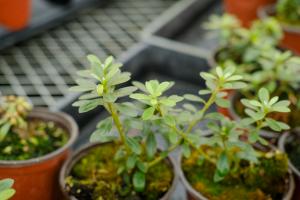1. Mode
The most common way of propagation of this plant is cutting propagation
2. Time
During the period from April to August every year, the climatic conditions during this period are more suitable for the growth of seedlings

3. Environment
The temperature should be maintained at about 25 degrees, and the air should have a certain humidity and should not be too dry. At the same time, wet sand should be prepared in advance
4. Method
Select 3 to 4 sections at the rhizome, remove all the leaves below, and then directly insert them into the sand. Roots can be produced in about 15 to 20 days. At this time, they can be transplanted or colonized

5. Precautions
① Don't let it bask in the sun until it takes root. It can be placed in a bright place
② During this period, we must keep the soil and air moist. The speed of rooting is also related to the temperature. If the environment and temperature at night cannot be controlled, we can wrap it with a thin layer of plastic, open it during the day to let it breathe and spray water to moisturize it
③ When transplanting or colonizing, we must choose the soil with good drainage, good air permeability and sufficient nutrients. We should also choose the flowerpot with good air permeability, especially for novices in flower cultivation
④ When planting, about 3 to 5 plants can be planted in each pot, and a cylinder can be placed in the middle to let it climb and grow around this cylinder
⑤ It should be taken care of carefully before it adapts to the new environment. After it adapts, it can be taken care of according to the general method


 how many times do yo...
how many times do yo... how many planted tre...
how many planted tre... how many pine trees ...
how many pine trees ... how many pecan trees...
how many pecan trees... how many plants comp...
how many plants comp... how many plants can ...
how many plants can ... how many plants and ...
how many plants and ... how many pepper plan...
how many pepper plan...































